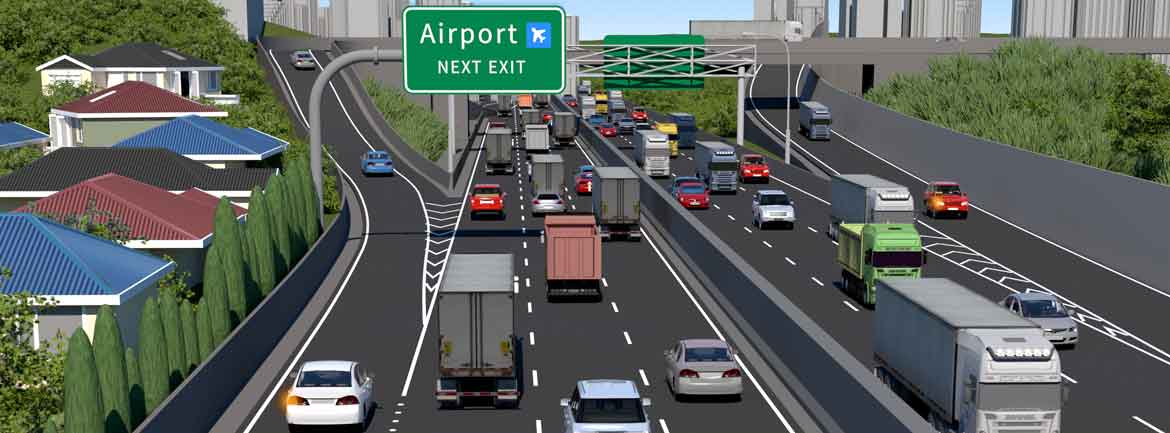
Road Rules: Be safe in the city
With a growing population comes busier roads
Motorists need to be alert and aware of potential hazards on the urban roads they navigate, from multi-lane motorways with on- and off-ramps, to special vehicle lanes and complicated intersections.
Multi-lane motorways
Last minute lane changes are a common cause of accidents, particularly on our busy motorways. For a safe lane change, indicate at least three seconds beforehand and check your mirrors and over your shoulder for blind spots. Moving into the correct lane early avoids the stress of finding yourself in the wrong lane, so make a conscious effort to look ahead for the exit signs. Overhead signs indicate upcoming exits and when a lane is exit-only. So too do the lane markings on the road: an exit-only lane will always be the far-left lane and marked by dotted lines. If you do miss the correct on- or off-ramp, proceed to the next exit and never use the emergency stopping area to reverse.
Flush medians
A flush median is a strip in the centre of the road marked with white diagonal lines and enables free-flow of traffic and safer driving when exiting or entering main roads. You may drive onto a flush median to turn right, or to wait for a gap in traffic after turning right onto the road from a side road or driveway. You may also encroach on a flush median when passing a cyclist, providing it is safe to do so. What if there is no flush median? On narrow roads or roads with fast-moving traffic, it may not be safe to stop in the middle of the road to turn right. The road code recommends pulling over to the left-hand side of the road until it is safe to turn right.
Special vehicle lanes
These include cycle lanes and high-occupancy transit lanes such as T2/T3 lanes, bus lanes and bus-only lanes. Special vehicle lanes are always marked and have signs restricting access to them. You’re allowed to drive in a special vehicle lane up to 50m before turning to reach a loading bay, driveway or intersection. Always check your blind spot before moving across to ensure you haven’t missed anyone already using the lane, including those on e-bikes. Special vehicle lanes often have hours marked on the sign that say when the lane is operational and when you can drive in it, or park your car there if the road allows. You’ll know access is restricted to the lane because the sign will have a red border and will say which vehicles are allowed in it. Some councils and transport bodies are now using CCTV footage to issue tickets to those using lanes when they’re not permitted to.
Traffic lights
Traffic lights may seem self-explanatory, but misjudgements – and accidents – are common. When approaching a signaled intersection, scan the road ahead to gauge how long the light has been green and the likelihood of it switching to amber. The road code states that an amber signal means stop, unless you are so close to the intersection that you can’t do so safely. The worst red-light running crashes are often caused by people speeding up to get through on the amber light.
Intersections
Whether controlled by traffic lights or not, intersections continue to be where most crashes happen. When approaching an intersection at the same time as an oncoming vehicle, make eye contact with the other driver before proceeding to protect you and your passengers – even if you have the right of way. If they aren’t looking your way, there’s a good chance they may not have seen you.
Reported by AA Directions motoring team for our AA Directions Autumn 2020 issue
